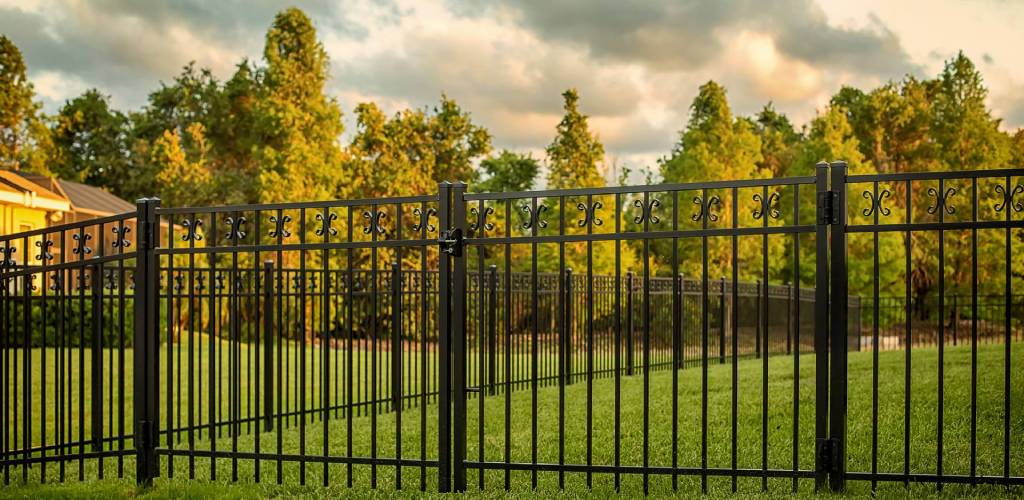All Categories
Featured
The success of your fencing setup depends greatly on exactly how well you prepare your residential or commercial property before the installation starts. Here are some important steps to comply with when preparing your residential or commercial property for a fencing installment.
![]()
Additionally, it's crucial to locate any below ground energies, such as water lines, gas pipelines, or electric wires. Call your neighborhood utility company to note the locations of these below ground systems to stop any type of damages throughout excavating.
![]()
![]()
Final thought. Preparing your residential or commercial property for a fence installment is an essential action that can save you time, money, and migraines during the process. By investigating regional policies, determining home lines, clearing the installment area, ensuring gain access to for devices, and completing your layout, you can make sure a smooth installment. Taking these easy actions will certainly assist you accomplish a lovely and sturdy fencing that boosts the personal privacy, safety and security, and appearance of your residential property.

- Research Citizen Rules and Permits. Before you begin, make certain you inspect the neighborhood zoning legislations and acquire any required permits for your fence setup. Numerous areas have certain guidelines on fencing height, positioning, and product, and you may require a permit to continue. In addition, if you live in a neighborhood with a Homeowners Organization (HOA), make certain to assess their regulations relating to secure fencing. Failing to obtain the appropriate licenses or comply with regional guidelines can bring about fines or perhaps the requirement to remove the fencing.
- Recognize Home Boundaries. Recognizing the specific boundaries of your residential property is crucial to make certain the fencing is installed in the right place. Be sure to check if your next-door neighbors have any existing fences or structures close to the residential property line that can impact the setup procedure.
- Clear the Installment Location. Eliminate any trees, shrubs, rocks, and debris that can block the fencing setup. If there is an existing fence, you may need to dismantle it before the setup team gets here.
Additionally, it's crucial to locate any below ground energies, such as water lines, gas pipelines, or electric wires. Call your neighborhood utility company to note the locations of these below ground systems to stop any type of damages throughout excavating.
- Strategy for Access to Your Building. During the installation procedure, your specialist may require hefty devices to dig holes and relocate products. Make sure that there is simple accessibility to your property for installment trucks and equipment.

- Discuss Your Fence Style with Your Professional. Prior to installation begins, you'll need to wrap up the style and materials for your fence. Discuss the fence's function, such as whether you're seeking decoration, protection, or privacy.
- Speak with Your Next-door neighbors. If your fencing will certainly be set up along a shared home line, it's an excellent idea to notify your next-door neighbors ahead of time. Having an open discussion can help prevent misconceptions and possible problems. You can talk about the kind of fence you intend to install, the installation schedule, and any type of issues they may have. While you might not require authorization from your next-door neighbors to set up a fence, being thoughtful can help preserve a great partnership with them.
- Plan for Upkeep After Installation. Once your fencing is mounted, there may be continuous maintenance jobs depending on the material you've selected. Timber fences might require to be discolored or painted to shield versus weathering, while vinyl fences commonly require marginal upkeep.

Final thought. Preparing your residential or commercial property for a fence installment is an essential action that can save you time, money, and migraines during the process. By investigating regional policies, determining home lines, clearing the installment area, ensuring gain access to for devices, and completing your layout, you can make sure a smooth installment. Taking these easy actions will certainly assist you accomplish a lovely and sturdy fencing that boosts the personal privacy, safety and security, and appearance of your residential property.
Latest Posts
Explore Special Auto Repair Offers in Chicago at Montclare Auto Repair
Published May 28, 25
1 min read
Discover the Premier Auto Repair Deals in Montclare, Chicago
Published May 27, 25
1 min read
Check Out Top Vehicle Maintenance Solutions at Montclare Auto Repair – Quality Service Today
Published May 26, 25
1 min read
More
Latest Posts
Explore Special Auto Repair Offers in Chicago at Montclare Auto Repair
Published May 28, 25
1 min read
Discover the Premier Auto Repair Deals in Montclare, Chicago
Published May 27, 25
1 min read
Check Out Top Vehicle Maintenance Solutions at Montclare Auto Repair – Quality Service Today
Published May 26, 25
1 min read